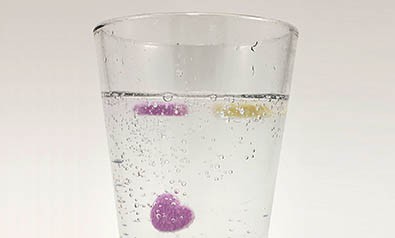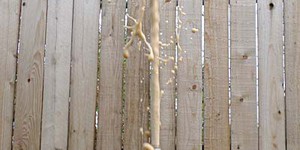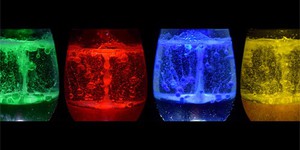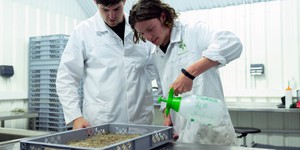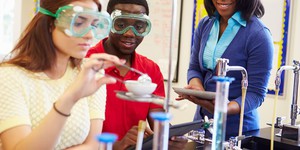Summary
Introduction
Have you ever opened a fresh bottle of carbonated water or soda, poured a glass of it, and just watched as the bubbles fizzed upward in the glass? Have you ever wondered what those bubbles are? They're made of carbon dioxide gas, which was packed tight in the soda before you opened the bottle. Not only can that carbon dioxide gas give you a fizzy drink to enjoy, but it can also give you a show. How? By making candy conversation hearts "dance!" Along the way you will discover some of the fun chemistry for this entertaining activity. So this Valentine's Day if you receive some conversation hearts, you can grab a glass of soda and try out this science activity to explore another way to enjoy the candies—by watching them slowly dance!
Materials
- Clear drinking glass
- Clear carbonated beverage
- Candy conversation hearts. Whereas some conversation hearts might be too heavy, Brach's tiny conversation hearts should work well.
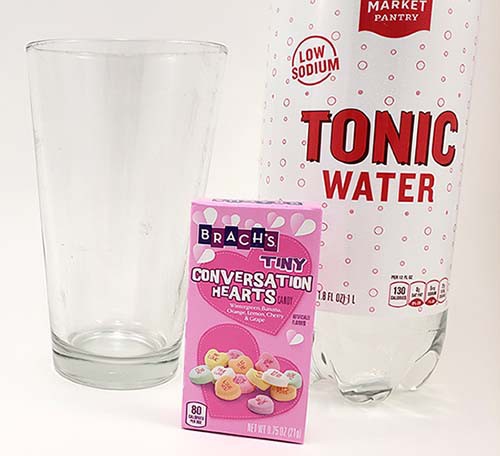 Image Credit: Ben Finio, Science Buddies / Science Buddies
Image Credit: Ben Finio, Science Buddies / Science Buddies
Instructions
- Fill the glass nearly to the top with fresh carbonated soda.
- Drop one of the conversation hearts into the glass.
- Patiently watch the glass for a few minutes. What happens?
- Drop a few more hearts into the glass and wait. What happens?Can you explain the behavior of the conversation hearts?
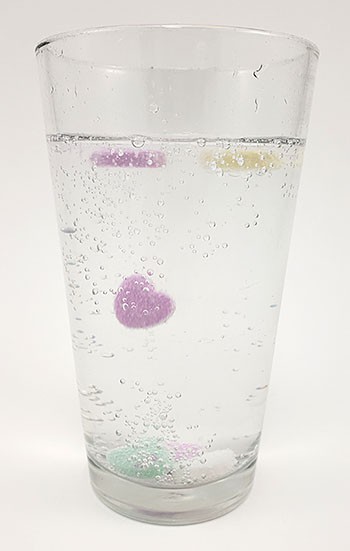 Image Credit: Ben Finio, Science Buddies / Science Buddies
Image Credit: Ben Finio, Science Buddies / Science Buddies
Cleanup
- Pour the soda down the drain and throw the candy hearts in the trash.
What Happened?
Did the conversation hearts first sink to the bottom of the glass but then, over time, float back up—and then down again—in the soda, "dancing"?
In this activity you dropped conversation hearts into a glass of freshly poured, carbonated soda. Because the conversation hearts are denser than soda, they should have quickly fallen to the bottom of the glass. But then something interesting should have happened. After a couple of minutes, some (or all) of the candies should have slowly begun to rise up through the soda. The carbon dioxide bubbles in the soda were sticking to the candies, and when enough lighter-than-soda bubbles accumulated on a given candy, they should have lifted it up through the soda. Once at the top of the soda the carbon dioxide bubbles could escape into the air, causing the candy to sink once again. But as the candy sank, more bubbles should have stuck to it, causing it to rise again and repeat the cycle. This up-and-down motion makes the conversation heart candies appear to slowly "dance" in the soda.
Digging Deeper
A carbonated beverage, such as a bottle of soda, is packed full of dissolved carbon dioxide gas. But you don't see bubbles of carbon dioxide gas while the bottle is still sealed. Why is this? Soda in bottles (and cans) is prepared and kept in pressurized conditions that force the gas to stay blended into the liquid—in solution. As soon as the bottle or can is opened, however, the pressure is reduced, allowing some of the gas to escape from solution—and turn into fizzy carbon dioxide bubbles! Pouring the soda into a glass releases even more bubbles. As you observed, these bubbles can attach to the conversation hearts, causing them to float.
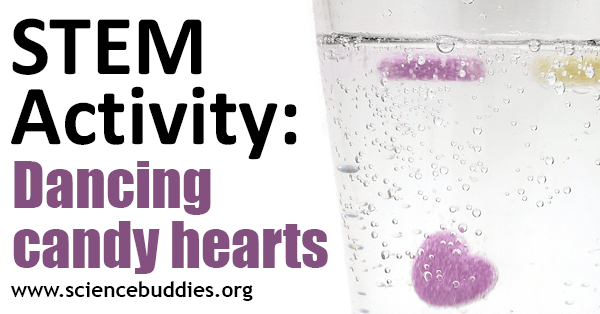 Image Credit: Science Buddies
Image Credit: Science Buddies
Ask an Expert
For Further Exploration
- Try this activity with other types of candy. Do you get the same results?
- Instead of using soda, try using water with vinegar and baking soda, which will also create carbon dioxide gas. Specifically, try filling a glass about half full with water, mix in one teaspoon of baking soda, add the conversation hearts and then slowly add vinegar until the glass is nearly full. Do the conversation hearts "dance" in the baking soda and vinegar mixture?


